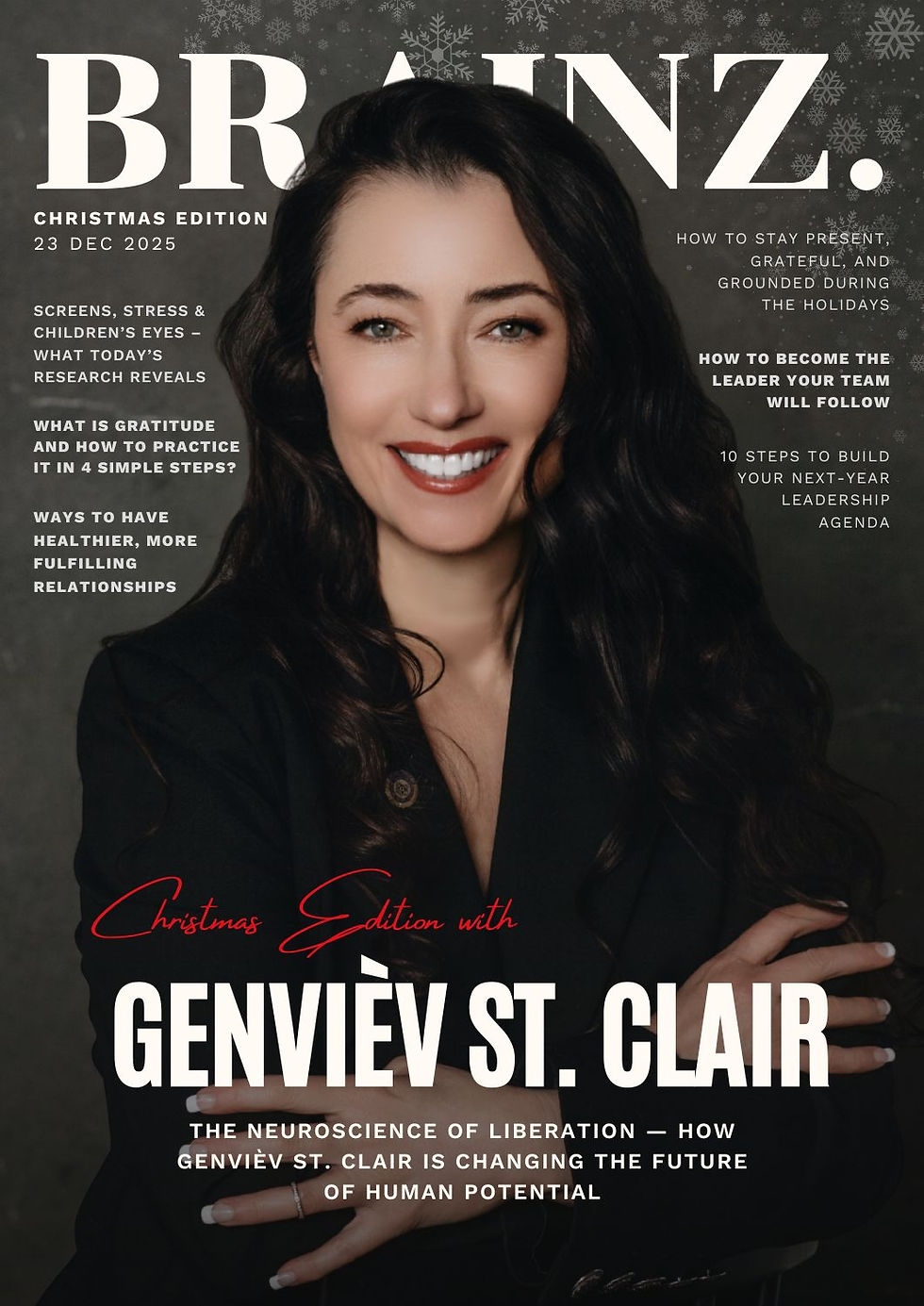The Science of Confidence and How to Reprogram Your Brain for Unstoppable Success
- Brainz Magazine

- Jul 21
- 4 min read
Written by Tan Chrissis, Speaker and Mindset Coach
Tan Chrissis is a Speaker and Mindset coach, serving as the CEO of CognitiveVerse, a platform dedicated to personal growth and cognitive wellness.

Confidence isn’t a mystery. It’s not luck. And it’s definitely not something only a few people are born with. Confidence is science, a series of neurological, psychological, and behavioral processes that anyone can learn to activate, including you. Let’s dive into the brain-based blueprint that transforms self-doubt into self-trust.

What is confidence, really?
The neurological roots of confidence
At its core, confidence is your brain’s ability to predict success based on past experience. When you repeatedly succeed even in small ways, your brain wires itself to expect more of that.
Confidence is just a neural pattern you can strengthen.
Confidence vs. arrogance: Spot the difference
Confidence says, “I can do this.” Arrogance says, “I’m better than you.” One is grounded in growth, the other in insecurity. True confidence doesn’t need to boast, it quietly believes.
The brain’s role in confidence-building
Neuroplasticity: The brain’s superpower
Neuroplasticity means your brain isn’t fixed, it’s flexible. It’s like clay, constantly being shaped by thought, action, and emotion. You’re not stuck with your current level of confidence. You can rewire it.
How thoughts physically reshape the brain
Repeated thoughts form neural pathways. The more you think, “I can’t,” the deeper that belief embeds. But here’s the twist: the opposite is also true. New beliefs create new wiring.
The confidence circuit: From belief to action
Belief influences behavior, which reinforces belief. It’s a cycle. Confident thoughts lead to confident actions and those actions feed back into your sense of capability.
Why you’re not born with (or without) confidence
The myth of the "confident type"
There’s no such thing as a “confidence gene.” What we perceive as natural confidence is often the result of practice, exposure, and support systems.
How the environment shapes self-belief
Family, culture, and early experiences all program your confidence thermostat. The good news? With awareness and intention, you can reset it.
The science behind reprogramming limiting beliefs
Understanding cognitive biases
Negativity bias: The enemy of confidence: Your brain gives more weight to negative experiences. One critique can outweigh ten compliments. It’s survival-based, but it sabotages confidence.
Confirmation bias and the confidence loop: We look for evidence that confirms what we already believe. If you think you’re not good enough, your brain filters the world through that lens. Flip the script, and new proof emerges.
Rewriting your mental script: Become the editor of your internal dialogue. Catch the lies. Replace them with evidence-based truths. Every belief you challenge is a pathway reprogrammed.
The habits of highly confident people (backed by research)
Positive self-talk and visualization
Olympic athletes don’t just train their bodies, they visualize success. Mental imagery strengthens confidence just like real reps do.
Body language and biofeedback
Standing tall, making eye contact, breathing deeply, these aren’t just gestures. They send confidence signals back to your brain.
Taking calculated risks regularly
Confidence is built through action. The more you step out of your comfort zone, the more data your brain collects that you can survive discomfort and even thrive.
Tools and techniques to reprogram confidence
Affirmations that actually work
Skip the cheesy slogans. Use affirmations that are believable and action-based, like: “I am capable of learning through failure.”
Mental rehearsal and visualization drills
Close your eyes. See yourself succeeding in detail, how you feel, and how others respond. The brain doesn’t distinguish well between imagined and real experiences.
Daily confidence rituals
Create a morning ritual: stand like a superhero, repeat your power statement, review one past win. Start your day with momentum.
Overcoming setbacks and rebuilding confidence
Fail forward: The growth mindset in action
Failure isn’t final. It’s feedback. The more you embrace it, the less it defines you. Confidence grows through recovery.
Resilience isn’t genetic, it’s practiced
Resilience is a skill, not a trait. It’s built by showing up again and again, even when it’s hard, especially when it’s hard.
The link between confidence and success
Why confidence triggers opportunity
Confident people speak up, step forward, and seize chances. That doesn’t mean they don’t fear it means they act anyway.
Social proof and the confidence feedback loop
When others see your belief in yourself, they mirror it. This creates a powerful loop: confidence attracts belief, and belief breeds more confidence.
Conclusion: You have the power to rewire confidence
Confidence is a skill. A practice. A muscle you can strengthen. Every thought you upgrade, every action you take, every risk you lean into it all counts.
You’re not waiting for permission. You’re rewiring your brain. You’re building unstoppable success, one belief at a time.
Read more from Tan Chrissis
Tan Chrissis, Speaker and Mindset Coach
Tan Chrissis is a visionary leader in cognitive wellness and personal growth. As the founder and CEO of CognitiveVerse, he has developed innovative tools to enhance mental performance and unlock human potential. Tan’s expertise spans cognitive strategies, digital innovation, and lifelong learning, empowering individuals and organizations to thrive in a fast-evolving world. Through his work, he aims to inspire others to achieve clarity, creativity, and growth.










.jpg)